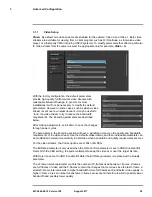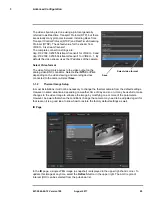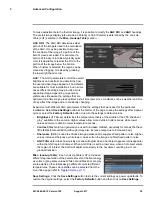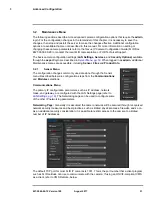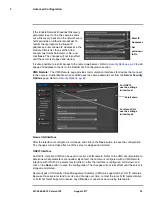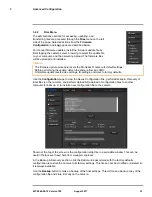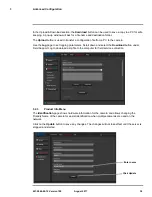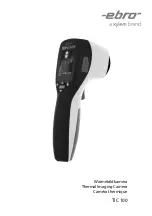
427-0064-00-12 Version 100
August 2017
24
2
Basic Operation and Configuration
Rinse the camera housing and optics with low pressure fresh water to remove any salt deposits and
to keep it clean. If the front window of the camera gets water spots, wipe it with a clean soft cotton
cloth dampened with fresh water.
Do not use abrasive materials, such as paper or scrub brushes as this will possibly damage the lens
by scratching it. Only wipe the lens clean when you can visually see contamination on the surface.
Use the following procedure and solvents, as required:
•
Acetone – removal of grease
•
Ethanol – removal of fingerprints and other contaminants
•
Alcohol – final cleaning (before use)
Step 1
Immerse lens tissue (optical grade) in Alcohol, Acetone, or Ethanol (reagent grade).
Step 2
With a new tissue each time, wipe the lens in an “S” motion
(so that each area of the lens will not be wiped more than once).
Step 3
Repeat until the lens is clean. Use a new tissue each time.
Image freezes momentarily
By design, the camera image freezes momentarily on a periodic basis during the Flat Field Correction
(FFC) cycle (also known as Non-Uniformity Correction or NUC). Every so often, the image will
momentarily freeze for a fraction of a second while the camera performs a flat field correction. A
shutter activates inside the camera and provides a target of uniform temperature, allowing the
camera to correct for ambient temperature changes and provide the best possible image.
No video
If the camera will not produce an image, check the video connection at the camera and at the display.
If the connectors appear to be properly connected but the camera still does not produce an image,
ensure that power has been properly applied to the camera and the circuit breaker is set properly. If a
fuse was used, be sure the fuse is not blown. If the video cabling is suspected as a possible source of
the problem, plug a monitor into the BNC connection inside the camera and determine if it produces
an image.
When the camera is powered on, it will do a NUC operation shortly after startup. If it is uncertain if the
camera is receiving power, it may be useful to listen to the camera to hear if the click-click of the
shutter mechanism can be heard. It may only be possible to perform this test when the camera is on
a work bench rather than in its installed position.
If the camera still does not produce an image, contact the FLIR dealer or reseller who provided the
camera, or contact FLIR directly.
Performance varies with time of day
There may be differences in the way the camera performs at different times of the day, due to the
diurnal cycle of the sun. Recall that the camera produces an image based on temperature
differences.
At certain times of the day, such as just before dawn, the objects in the image scene may all be
roughly the same temperature. Compare this to imagery right after sunset, when objects in the image



















